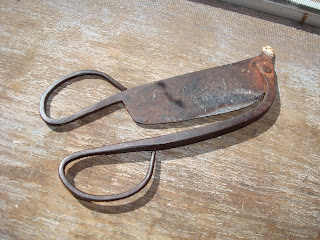 |
| writespirit.net |
It's MLK Day and today's holiday got me thinking about people of African descent in the Marianas.
We can't exclude the possibility that people of African descent made it to the Marianas before the Europeans came, but we don't know about it as things weren't written down back then.
BLACK CREW MEMBERS
When the Spaniards made contact with the Marianas, it wasn't unusual to have people of African descent among them on board, some slave, some free. A Franciscan friar who hung around the Marianas long before colonization began, Juan Pobre de Zamora, wrote about blacks who were living in the Marianas, having once been members of the crew of a Spanish vessel. Zamora's observation comes from his stay in the Marianas in 1602. Yes, that long ago.
BLACK MEXICANS
A Mexican of African descent
In the 1727 Census of Guam, there are three men described as "negros de la costa," "negroes of the coast." What coast?
Along the shore of the Mexican states of Guerrero and Oaxaca is a strip of land, facing the Pacific Ocean, called "La Costa Chica," "the Little Coast." Here, many black Africans were settled during Spanish colonial times. Their descendants remain to this very day and it is common for them to say "Somos negros de la costa." "We are blacks from the coast."
The great port city of Acapulco also lies in the state of Guerrero, not far from "la Costa Chica." It's not hard to imagine black Mexicans from Guerrero and Oaxaca joining the Acapulco galleons, sailing to the Marianas and settling there.
The shaded area is the Costa Chica, home to many Black Mexicans, close to Acapulco
PHILIPPINE NEGRITOS
In the same Guam census of 1727 there is a man described as a "negro of Sanbal." "Sanbal" is more than likely a clerical error in the transcription and should be Sambal, modern-day Zambales province in the Philippines, where there are
aetas, an ancient and dark-skinned people of that country. Short, black-skinned people were called
negritos by the Spanish, and the word means "small black people."
Negritos share a lot of genetic traits with the Austonesian people among they have lived for thousands of years, but it is possible that they descend from a very ancient migration from Africa eastward towards Southeast Asia.
An aeta family from Zambales, Philippines
MORENO
Some seventy years later, in censuses towards the end of the 1700s, some residents of Guam are listed as "moreno." "Moreno" can mean several things in Spanish but, in colonial Latin America, it also meant a "free black man," meaning "not a slave."
In 1797, for example, there were 10
morenos in Hag
åt
ña; 5 in Hum
åtak and 13 in P
ågo.
Even if only half of these black men had children with Chamorro women, that would be 14 men! That's a lot of black blood entering the Chamorro blood stream!
A Spanish colonial census showing the use of the word "moreno"
Spanish censuses separated people according to race
FAMILIAN WHITE
White Street
in Mangilao
Finally, there is consistent oral tradition that a certain family, many of whom live today in Mangilao, are descendants of a black man who came to Guam in the 1800s aboard one of the whaling ships. His name was Henry (Enrique, in Spanish) White and he was from the United States. When he settled permanently in Guam around 1860, he married the Chamorro María Dueñas Palomo and had a good number of children with her, whose descendants live today, many in the Mangilao area. Henry White died on Guam in 1896.
Jose White and wife Ana
Grandson of African American Henry White
So, yes, there were people of black African heritage living in the Marianas for at least the last 300 years and some Chamorros today are their descendants. Many more Chamorros have African blood in them now since Chamorros have spread all over the globe.
In quite a number of Chamorros doing their DNA analysis, genetic connections with Africa are showing up and surprising them. Hopefully, after reading this blog post, they won't be so surprised when they understand more the history of our connections with Latin America and their connection with Africa.
BAKUKU
Knowing now that black people have been visiting the Marianas for hundreds of years, with some of them staying in the Marianas and marrying Chamorro women, it shouldn't surprise us then that Chamorros have a nickname for black people -
bakuku.
But where did the word
bakuku come from? If you think it came from a Spanish source, we find the word in the Caribbean and in Brazil (Portuguese) where it can mean a black mollusk or clam; or a word of African origin meaning "banana." A Caribbean boogey man named
baku (short and black) probably got its name from Africa and is probably linked with "banana" or
bakuku, since the
baku was supposed to live on bananas.
At the end of the day, we'll probably never know where Chamorros got the word
bakuku to describe black-skinned people, but my guess is that they picked it up from slang they learned from the foreigners who visited our shores in Spanish times.
MULÅTO
Now
mulato was a word the Spaniards used to describe a person of mixed black and white ancestry. Usually, black features would be apparent in a
mulato. In Chamorro,
mulåto means frizzy or very curled hair. It's almost certain Chamorros used this word because of its connection with people of African descent.



































